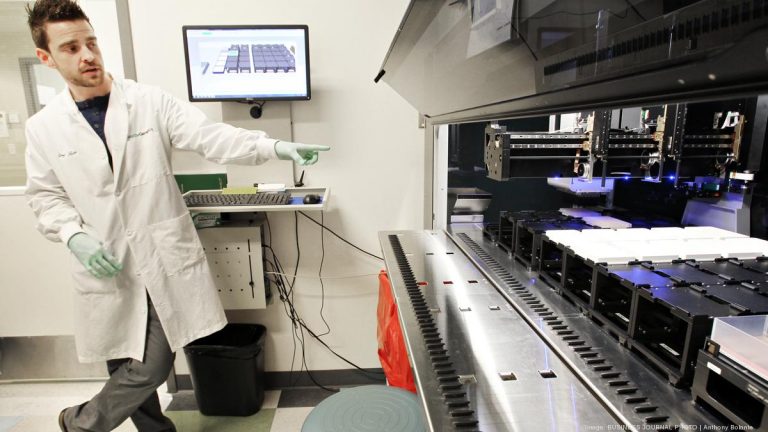
Seattle Genetics, Inc. (NASDAQ:SGEN) just reported second quarter financials, and the company is up nearly 10% on the data. Alongside the numbers, however, we got word that the company is pitching to put out its phase III topline for Adcetris as a lymphoma candidate, before the close of this quarter. This has the potential to outweigh the earnings impact pretty substantially, so ahead of the readout, here’s a look at the drug in question and what we’re looking for as being indicative of success.
The drug, Adcetris is already approved in 65 countries worldwide, having initially picked up approval in the US for two simultaneous indications – Hodgkin lymphoma (HL) and a rare lymphoma known as systemic anaplastic large cell lymphoma (ALCL). It’s what’s called an antibody drug conjugate, which means it’s a combination of an antibody and a cancer killing drug. The antibody is used as a sort of targeting system – it’s particular to a market (in this instance, a protein) expressed by cancerous cells. It targets and locates these proteins (and by proxy, the cancerous cells) and delivers the cancer killing drug, where the latter goes to work destroying the cell. In Adcetris, brentuximab is the antibody and a combination of elements that together are referred to as MMAE, or vedotin, is the drug. On its own, the MMAE would be too toxic for the level of doe required for systemic delivery efficacy. With the brentuximab in place to target the cancerous cells, it can be delivered at an effective dose without excessive toxicity.
Anyway, getting back to the present, Seattle is conducting a phase III that compares Adcetris to two current SOC cancer drugs, Methotrexate and Bexarotene, in patients with a variation of T-cell lymphoma (TCL) called CD30-positive lymphoma. The protein that brentuximab complements (i.e. the marker on the cancerous cells that draws the brentuximab antibody towards it) is CD30. The theory is, then, that just as it does in HL and ALCL, Adcetris should be able to deliver an efficacious dose to the TCL cells.
The phase III completed enrollment in September last year, and primary completion was slated for May this year. The trial itself won’t technically finish before July 2018, by way of an extension study to follow up on long term impact, but that won’t stop Seattle Genetics submitting a supplemental biologics license application (sBLA) after topline release – assuming the trial meets its endpoint.
Which brings us nicely to what we are looking for from the data as indicative of efficacy.
The primary endpoint is judged by the proportion of patients achieving an objective response that lasts at least 4 months, within a timeframe that spans a period from first dosing to disease progression, death or study closure (the aforementioned May 2018). The goal is to beat the other two drugs in the investigation, so we are looking for a higher proportion of patients in the brentuximab arm lodging a 4 month OR than in either the Methotrexate arm or the Bexarotene arm.
There are a few secondary endpoints, including complete response rate and progression free survival (again, measured in comparison to the other two arms) and a symptom burden measure. The latter is likely the least important from an approval standpoint – these sorts of treatment don’t have great safety and tolerability profiles as they are, and the FDA will recognize that when it makes its decision. In other words, if the drug shows an improved efficacy over the other two drugs in the study, the FDA will likely accept a slightly less tolerable toxicity profile as a kicker to brentuximab’s approval. This is not set in stone, of course, but we’ve seen it happen before.
That’s the science, the trial and the data out of the way – what are we looking at from a timeframe perspective? Well, as mentioned, the company expects to put out topline from the trial during the current quarter. Assuming the trial meets its endpoint, and improves upon the OR proportion of its peers, we could see an NDA before the close of the year – maybe stretching out to end Q1 2017 if there is any hold up. It’s an sBLA, so we should see a pretty quick turnaround from the agency, and we’re looking at an approval sometime H2 2017.




